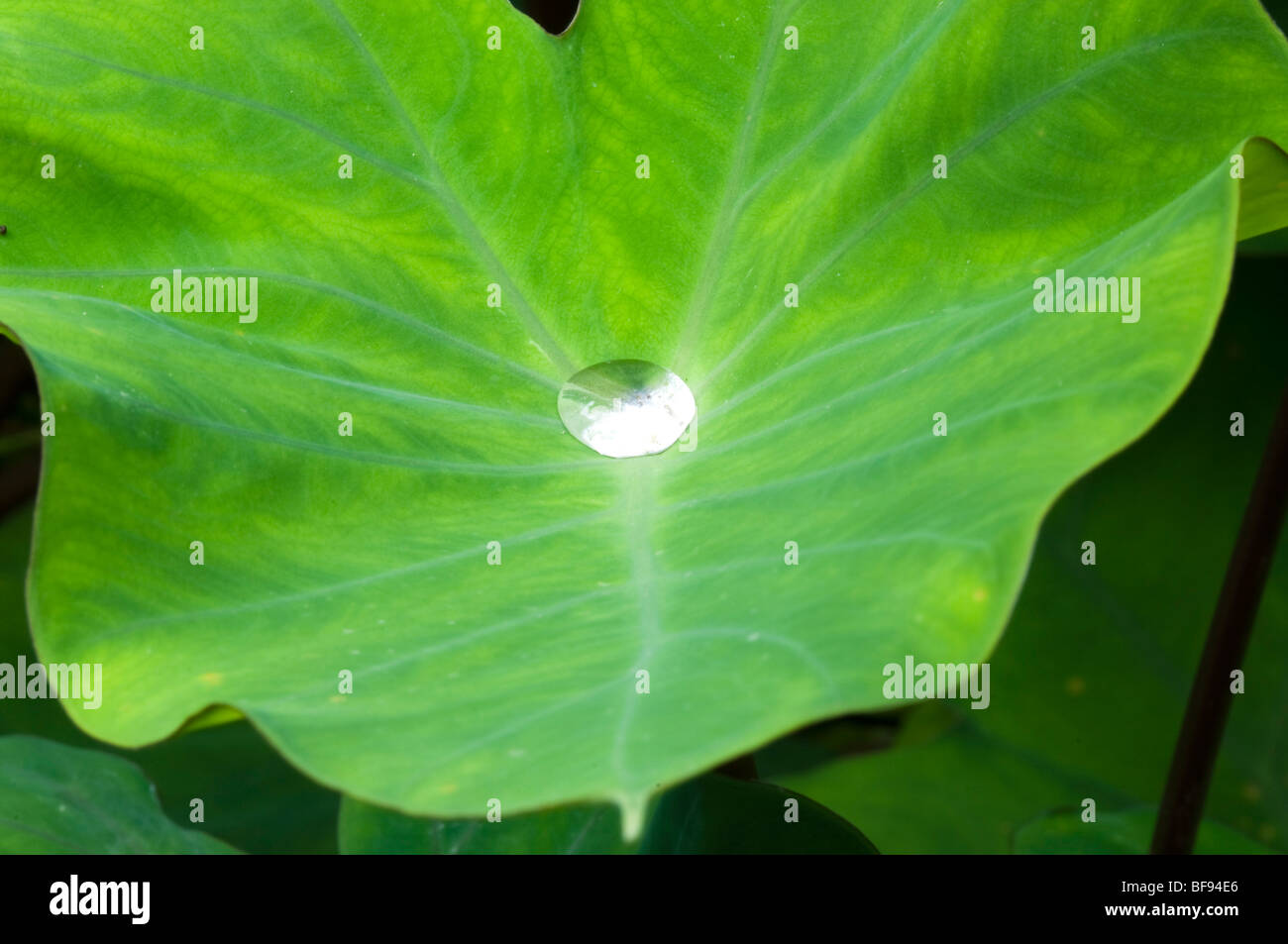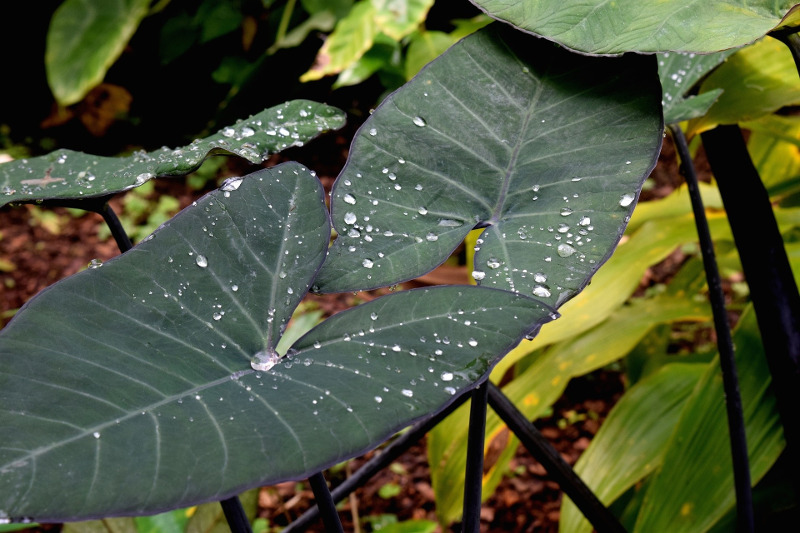Understanding the Watering Needs of Elephant Ears
Elephant ears, also known as Colocasia or Alocasia, are popular ornamental plants prized for their large, showy leaves. However, these plants require careful attention to their watering needs to thrive. Proper hydration is crucial for elephant ears, as it directly affects their growth, health, and overall appearance. In this article, we will delve into the specifics of how to water elephant ears, exploring the consequences of overwatering and underwatering, as well as the unique watering needs of these plants compared to other species.
One of the primary concerns when it comes to watering elephant ears is overwatering. These plants are susceptible to root rot and other problems when the soil is consistently waterlogged. On the other hand, underwatering can cause the leaves to become scorched and the plant to become stressed. To avoid these issues, it’s essential to understand the specific watering needs of elephant ears.
Elephant ears require a consistent supply of moisture, especially when they’re producing new growth. However, the frequency and amount of water needed can vary depending on factors such as climate, pot size, and time of year. For example, elephant ears grown in hot and dry climates may require more frequent watering, while those in cooler and more humid environments may need less. By understanding these factors and adjusting your watering schedule accordingly, you can help your elephant ears thrive.
When it comes to watering elephant ears, it’s also important to consider the type of soil they’re planted in. Well-draining potting mixes can help prevent waterlogged soil, while a mix with high organic matter content can retain moisture and reduce the need for frequent watering. By choosing the right soil and adjusting your watering schedule, you can create an optimal environment for your elephant ears to grow.
In the next section, we’ll explore how to check the soil moisture of your elephant ears, including the finger test, moisture meter, and observing the plant’s signs of water stress. By mastering these techniques, you’ll be able to determine when your elephant ears need water and when they don’t, ensuring they receive the right amount of hydration to thrive.
How to Check the Soil Moisture of Your Elephant Ears
Checking the soil moisture of your elephant ears is a crucial step in determining when to water them. There are several methods to check the soil moisture, and we’ll explore three effective techniques: the finger test, moisture meter, and observing the plant’s signs of water stress.
The finger test is a simple and effective way to check the soil moisture. To perform the finger test, insert your finger into the soil up to the first knuckle. If the soil feels dry, it’s time to water your elephant ears. If the soil feels moist or wet, wait a day or two before checking again. This method is especially useful for checking the moisture levels in the top inch of soil, which is where the roots of your elephant ears are most active.
Another way to check the soil moisture is by using a moisture meter. A moisture meter is a handy tool that measures the moisture levels in the soil. Simply insert the probe into the soil, and the meter will give you a reading of the moisture levels. This method is more accurate than the finger test and can provide a more detailed reading of the soil moisture.
In addition to the finger test and moisture meter, observing the plant’s signs of water stress is also an effective way to determine when to water your elephant ears. If the leaves of your elephant ears are droopy or wilted, it may be a sign that the plant needs water. On the other hand, if the leaves are perky and firm, it’s likely that the plant has enough water. By observing the plant’s signs of water stress, you can adjust your watering schedule accordingly.
It’s also important to note that the frequency of checking the soil moisture will depend on the climate and time of year. In hot and dry climates, you may need to check the soil moisture more frequently, while in cooler and more humid climates, you may need to check less often. By adjusting your checking schedule according to the climate and time of year, you can ensure that your elephant ears receive the right amount of water.
By using these three methods to check the soil moisture, you can determine when to water your elephant ears and ensure that they receive the right amount of hydration. In the next section, we’ll explore the best watering schedule for elephant ears, taking into account factors such as climate, pot size, and time of year.
The Best Watering Schedule for Elephant Ears
Developing a watering schedule for elephant ears requires consideration of several factors, including climate, pot size, and time of year. While there is no one-size-fits-all approach to watering elephant ears, we can provide a general guideline to help you get started.
In general, elephant ears prefer moist soil, but not waterlogged. A good rule of thumb is to water your elephant ears when the top 1-2 inches of soil feels dry to the touch. This can be achieved by checking the soil moisture regularly, using the finger test or a moisture meter.
In hot and dry climates, elephant ears may require more frequent watering, every 2-3 days. In cooler and more humid climates, watering every 4-5 days may be sufficient. It’s also important to adjust your watering schedule based on the time of year. During the active growing season (spring and summer), elephant ears require more water than during the dormant season (fall and winter).
Pot size is also an important factor to consider when developing a watering schedule. Smaller pots dry out faster than larger pots, so you may need to water more frequently. On the other hand, larger pots may require less frequent watering.
It’s also important to note that elephant ears have different watering needs at different stages of growth. Young plants require more frequent watering than mature plants. As your elephant ears grow and mature, you can adjust your watering schedule accordingly.
Flexibility is key when it comes to watering elephant ears. Be prepared to adjust your watering schedule based on changes in climate, pot size, and time of year. By monitoring the soil moisture and adjusting your watering schedule accordingly, you can ensure that your elephant ears receive the right amount of water.
Remember, the key to successful watering is to find a balance between providing enough water and avoiding overwatering. By following these guidelines and adjusting your watering schedule based on individual plant needs, you can help your elephant ears thrive.
Watering Techniques for Elephant Ears: Tips and Tricks
When it comes to watering elephant ears, there are several techniques to consider. Each method has its benefits and drawbacks, and the best approach will depend on your specific climate, pot size, and plant needs. In this section, we’ll explore three common watering techniques for elephant ears: bottom watering, top watering, and using a drip irrigation system.
Bottom watering involves placing the pot in a saucer or tray filled with water, allowing the plant to absorb water through the drainage holes. This method is beneficial for elephant ears, as it helps to prevent overwatering and ensures that the roots receive the right amount of moisture. However, it can be time-consuming and may not be suitable for large pots or plants with deep roots.
Top watering, on the other hand, involves pouring water directly onto the soil surface. This method is quick and easy, but it can be prone to overwatering, especially if the soil is already saturated. To avoid this, make sure to check the soil moisture before watering, and avoid getting water on the leaves to prevent fungal diseases.
Using a drip irrigation system is another effective way to water elephant ears. This method involves delivering water directly to the roots, reducing evaporation and runoff. Drip irrigation systems are ideal for large pots or plants with deep roots, and can be programmed to water at specific intervals. However, they can be more expensive to install and may require more maintenance than other methods.
Regardless of the watering technique you choose, it’s essential to monitor the soil moisture and adjust your approach accordingly. By combining the right watering technique with a well-draining potting mix and a suitable watering schedule, you can help your elephant ears thrive.
In addition to these techniques, there are a few other tips to keep in mind when watering elephant ears. Avoid getting water on the leaves or crown of the plant, as this can cause fungal diseases. Also, make sure to water in the morning, so the plant has the entire day to absorb the water. By following these tips and techniques, you can develop a watering routine that meets the unique needs of your elephant ears.
Common Mistakes to Avoid When Watering Elephant Ears
When it comes to watering elephant ears, there are several common mistakes to avoid. By being aware of these mistakes, you can ensure that your elephant ears receive the right amount of water and thrive.
One of the most common mistakes people make when watering elephant ears is overwatering. Overwatering can lead to root rot, which can be fatal to the plant. To avoid overwatering, make sure to check the soil moisture regularly and adjust your watering schedule accordingly. Also, avoid getting water on the leaves or crown of the plant, as this can cause fungal diseases.
Underwatering is another common mistake to avoid. Underwatering can cause the leaves to become scorched and the plant to become stressed. To avoid underwatering, make sure to water your elephant ears regularly, especially during hot and dry weather.
Getting water on the leaves is another mistake to avoid. Water on the leaves can cause fungal diseases, such as leaf spot and crown rot. To avoid getting water on the leaves, use a watering can or cup to water at the soil level, rather than overhead.
Not adjusting the watering schedule based on climate and time of year is another mistake to avoid. Elephant ears have different watering needs in different climates and at different times of the year. For example, in hot and dry climates, elephant ears may require more frequent watering, while in cool and wet climates, they may require less frequent watering.
Not monitoring the plant’s signs of water stress is another mistake to avoid. Elephant ears will often show signs of water stress, such as yellowing leaves or droopy stems, before they become severely stressed. By monitoring these signs, you can adjust your watering schedule accordingly and prevent more serious problems from developing.
By avoiding these common mistakes, you can ensure that your elephant ears receive the right amount of water and thrive. Remember to always check the soil moisture, adjust your watering schedule based on climate and time of year, and monitor the plant’s signs of water stress.
How to Water Elephant Ears in Different Climates
Elephant ears are adaptable to various climates, but their watering needs vary depending on the environment. Understanding how to water elephant ears in different climates is crucial to ensure they receive the right amount of moisture.
In hot and dry climates, elephant ears require more frequent watering to prevent dehydration. Water them every 2-3 days during the summer months, and make sure the soil is consistently moist but not waterlogged. In these climates, it’s also essential to provide some shade to prevent scorching of the leaves.
In cool and wet climates, elephant ears require less frequent watering. Water them every 4-5 days during the spring and fall months, and make sure the soil is not too wet or dry. In these climates, it’s essential to ensure good air circulation to prevent fungal diseases.
In humid environments, elephant ears require careful watering to prevent overwatering. Water them every 3-4 days during the summer months, and make sure the soil is consistently moist but not waterlogged. In these climates, it’s essential to provide good air circulation to prevent fungal diseases.
Regardless of the climate, it’s essential to monitor the soil moisture and adjust the watering schedule accordingly. Use a moisture meter or the finger test to check the soil moisture, and adjust the watering schedule based on the results.
In addition to adjusting the watering schedule, it’s also essential to consider the time of year. During the active growing season (spring and summer), elephant ears require more water than during the dormant season (fall and winter).
By understanding how to water elephant ears in different climates, you can ensure they receive the right amount of moisture and thrive. Remember to monitor the soil moisture, adjust the watering schedule accordingly, and provide the right amount of shade and air circulation.
Monitoring Your Elephant Ears for Signs of Water Stress
Monitoring your elephant ears for signs of water stress is crucial to ensure they receive the right amount of water. By recognizing the signs of water stress, you can adjust your watering schedule accordingly and prevent more serious problems from developing.
One of the most common signs of water stress in elephant ears is yellowing leaves. If the leaves of your elephant ears are turning yellow, it may be a sign that the plant is not receiving enough water. Check the soil moisture and adjust your watering schedule accordingly.
Another sign of water stress in elephant ears is droopy stems. If the stems of your elephant ears are droopy or wilted, it may be a sign that the plant is not receiving enough water. Check the soil moisture and adjust your watering schedule accordingly.
Slow growth is also a sign of water stress in elephant ears. If your elephant ears are not growing as quickly as they should be, it may be a sign that the plant is not receiving enough water. Check the soil moisture and adjust your watering schedule accordingly.
Other signs of water stress in elephant ears include leaf drop, leaf curl, and leaf scorch. If you notice any of these signs, it’s essential to adjust your watering schedule accordingly to prevent more serious problems from developing.
To respond to signs of water stress, adjust your watering schedule accordingly. If the soil is dry, water your elephant ears immediately. If the soil is already moist, wait a few days before watering again.
In addition to adjusting your watering schedule, it’s also essential to provide your elephant ears with the right amount of humidity. Elephant ears prefer a humid environment, typically between 50-70% relative humidity. You can increase the humidity around your elephant ears by placing the pot on a tray filled with water and pebbles or using a humidifier.
By monitoring your elephant ears for signs of water stress and adjusting your watering schedule accordingly, you can ensure they receive the right amount of water and thrive.
Conclusion: Mastering the Art of Watering Elephant Ears
Watering elephant ears can be a delicate process, but with the right knowledge and techniques, you can master the art of providing your plants with the perfect amount of hydration. By understanding the unique watering needs of elephant ears, checking the soil moisture regularly, and adjusting your watering schedule accordingly, you can ensure that your plants thrive.
Remember, the key to successful watering is to be flexible and adjust your approach based on individual plant needs. Don’t be afraid to experiment and try different watering techniques to find what works best for your elephant ears.
By following the tips and guidelines outlined in this article, you’ll be well on your way to becoming an expert in how to water elephant ears. With a little practice and patience, you’ll be able to provide your plants with the perfect amount of water, and they’ll reward you with beautiful, healthy growth.
So, go ahead and give your elephant ears the best chance to thrive. With the right watering techniques and a little TLC, you’ll be enjoying the beauty and elegance of these stunning plants in no time.








